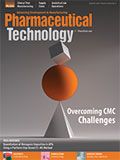Formulation and Manufacturing Trends for Parenterals
Formulators of parenteral drugs must be cautious of specific considerations and challenges that arise during development and manufacture.
RII ZASTROZHNOV/STOCK.ADOBE.COM

As the numbers of poorly soluble and complex molecules, such as biologics, entering drug development are increasing, industry is also witnessing a positive impact within the parenteral formulation market. The advantages of non-oral administration techniques for these complex and poorly soluble molecules, where absorption of the active ingredient is simplified and the first pass the metabolism effect is avoided, are well-documented.
Parenteral formulations are dosage forms to be administered non-orally, via a subcutaneous, intravenous, intraosseous, or intramuscular route. According to market research, rising approval rates of new parenteral drugs worldwide should drive significant growth in the parenteral drug market revenue in the near future (1). Specifically looking at the global sterile injectable drug market, for example, Transparency Market Research anticipates the compound annual growth rate to exceed 11% between 2017 and 2025 (2).
However, compared with oral-solid dosage forms, parenteral formulations require very specific and important considerations, and raise certain challenges and limitations, such as drug stability issues. Primarily, solutions, suspensions, or emulsions that are developed for administration by injection or implantation are directly entered into a human’s systemic circulation system and so must be sterile and safe for use. Furthermore, sterile parenteral formulations need to be pyrogen-free and clear of visible and sub-visible particles, to name a few compendia-specified criteria.
To learn more about the intricacies of parenteral formulation, Pharmaceutical Technology spoke with Fabio Stevanon, director of Global Injectables Platform at CordenPharma International.
Important considerations for parenterals
PharmTech: What are some of the most important considerations for parenteral drug formulation?
Stevanon (CordenPharma): All considerations related to parenteral drug formulation begin with assuring the successful, targeted delivery of the API to treat the target condition effectively. Formulation must support the desired therapeutic effects of the API after administration.
So much of any given injectable drug’s therapeutic value is related to its specific API formulation in solution or suspension. Bioavailability and other desired pharmacokinetic effects are all dependent on the finished drug’s eventual, commercial formulation.
Parenteral formulations are going places they’ve never been before, where we are seeing many sterile injectables being increasingly paired with new delivery technologies to assure convenient and timely, prescribed dosing of drugs over time.
For combination device-drug products, formulations must be tailored to achieve specific attributes related to both the device and drug product, like stability during targeted shelf life, compatibility with the primary packaging, viscosity and similar parameters, plus other aspects of drug administration relative to the specific medical device. Only proven expertise gained through testing and efficient analytical method development, as well as experience in combining device and drug products, will deliver a successful formulation in this space.
Beyond that, parenteral formulation chemistries must serve commercial and manufacturing interests as best as possible. Formulation has direct influence on scale-up and process variability, stability and other processing, and manufacturing-oriented aspects related to the drug’s successful commercial development.
PharmTech: Could you elaborate on the importance of excipients in parenteral drug formulation?
Stevanon (CordenPharma): Two things are important regarding excipients. First, whatever the API, excipients must be selected based on their performance and utility in service to the particular formulation and therapeutic function in question. The earlier this selection is established in the development phase, the better.
The second priority is to evaluate excipients for specific attributes that help sustain the drug product’s commercial manufacture including compliance, sterility profiles, availability, reliability of supply, stability in process, and more.
Benefits and challenges specific to parenterals
PharmTech: In your opinion, what are the major benefits of a parenteral drug formulation over other forms?
Stevanon (CordenPharma): Parenteral drugs deliver faster therapeutic action compared to slower-acting dosage forms such as oral-solid dosage (OSD). Parenteral drug formations also allow for higher dosage levels in circumstances when critical therapies must enter the blood stream right away, such as emergency surgery, heart attacks or infections, and so on.
There are also other benefits related to dosing accuracy such as how a proper, strictly validated injectable formulation will, in most cases, grant better bioavailability at the desired dosage level.
PharmTech: And the biggest challenges in parenteral drug formulation?
Stevanon (CordenPharma): The validation of a parenteral formulation is much more challenging compared to OSD. The fast-acting nature of this administration route means that parenteral formulations are subject to stricter compliance regulations to ensure patient safety and must stay within specific, and usually very narrow, parameters to obtain approval from regulatory bodies.
Processing and manufacturing sterile parenteral dosage forms therefore requires a comprehensive approach, including a mastery of sterile containment, fill/finish and data-driven manufacturing and control processes. As this is a challenge that not all pharma companies can or are willing to address in-house, many are turning to strategic, full-service outsourcing partners to support their business models and drug development strategies as a result.
Small versus large molecule
PharmTech: Could you discuss the major differences that need to be considered when formulating a small molecule or a biologic as a parenteral drug?
Stevanon (CordenPharma): There is an extra level of expertise, technology, and skill that is required to formulate a biologic as a parenteral drug. Small-molecule parenterals can be produced and manufactured using traditional analytical methods that are standard practice throughout the industry. However, biologics require a different approach to analytical testing and manufacturing processes, which older, less technologically advanced facilities may not be able to handle. In addition, biological parenteral manufacturing requires a state-of-the-art facility where in most cases ‘disposable/single-use’ technology is a given, and sometimes a dedicated ‘biological’ plant is needed.
Regulatory considerations
PharmTech: What are the main regulatory challenges facing parenteral drug formulators?
Stevanon (CordenPharma): Because of the difficulty in maintaining the supply for the high demand of injectable drugs while also keeping up with manufacturing quality and security at high volumes, we have seen increasing pressure by regulators on drug manufacturers to control processes more effectively and remove potential for process variation and contamination.
Regulators are also keeping a close eye on developments in the combination device–drug product space. Many new pharma development projects and lifecycle management opportunities are exploring the integration of medical devices with drug products and investing in developing these technologies because of their therapeutic effectiveness and potential value to patients.
For many combination device–drug developers, guidelines and applicable manufacturing standards have and are evolving rapidly. Such a strong growth in this sector of the pharma industry has raised significant requirements on development, formulation, clinical supply, design transfer and control, risk management, and commercial supply of these combination products, making both their engineering and compliance very challenging.
Future trends: Optimizing development
PharmTech: Over the next decade, what trends do you anticipate will impact the parenteral drug formulation space?
Stevanon (CordenPharma): For many pharma companies, there is a growing need to invest in facilities, equipment, and process controls associated with producing parenteral drugs and combination drug–device products. Optimal development strategies will require extensive, as well as broader expertise, often found by engaging established, competent CDMO [contract development and manufacturing organization] providers-this trend will continue to gain momentum in the coming decade.
Industry is also witnessing the adoption of advanced technologies to ensure quality and reliability in manufacture. For example, the emergence of disposable/single-use-system injectable technologies is providing alternatives to traditional compounding-filling in stainless steel or glass-lined vessels. The capabilities for single-use compounding-filling suites will therefore be more and more needed to handle oxidation-prone compounds not compatible with traditional stainless-steel mixing vessels and transfer lines.
References
1. Fact.MR, “Parenteral Drug Market Forecast, Trend Analysis and Competition Tracking-Global Market Insights 2018 to 2028,” fact.mr.com, Market Report, accessed July 8, 2019.
2. Transparency Market Research, “Sterile Injectable Drugs Market-Global Industry Analysis, Size, Share, Growth, Trends, and Forecast 2017–2027,” transparencymarketresearch.com, January 2018.
Article Details
Pharmaceutical Technology
Vol. 43, No. 8
August 2019
Pages: 24–25
Citation
When referring to this article, please cite it as F. Thomas, “Formulation and Manufacturing Trends for Parenterals,” Pharmaceutical Technology 43 (8) 24–25 (2019).

Pharmaceutical Tariffs Are Imminent: How Industry is Bracing for Impact
April 16th 2025On April 14, 2025, the Trump Administration launched a national security-driven investigation into pharmaceuticals, a move that will likely result in tariffs being placed on pharmaceutical drugs, ingredients, and other components that are imported from outside of the United States.
Drug Solutions Podcast: A Closer Look at mRNA in Oncology and Vaccines
April 30th 2024In this episode fo the Drug Solutions Podcast, etherna’s vice-president of Technology and Innovation, Stefaan De Koker, discusses the merits and challenges of using mRNA as the foundation for therapeutics in oncology as well as for vaccines.